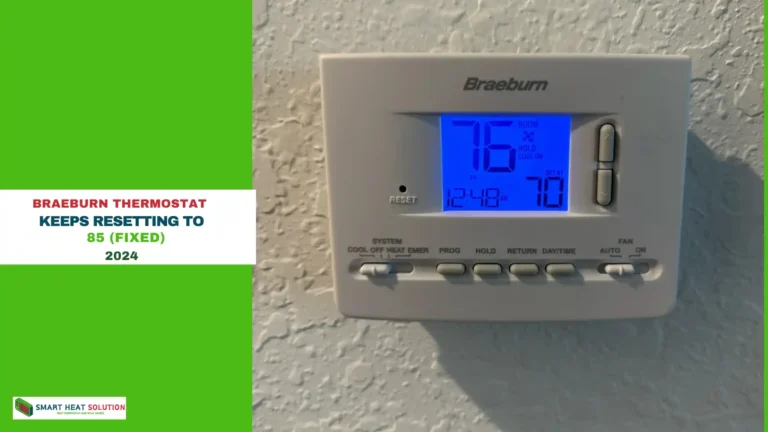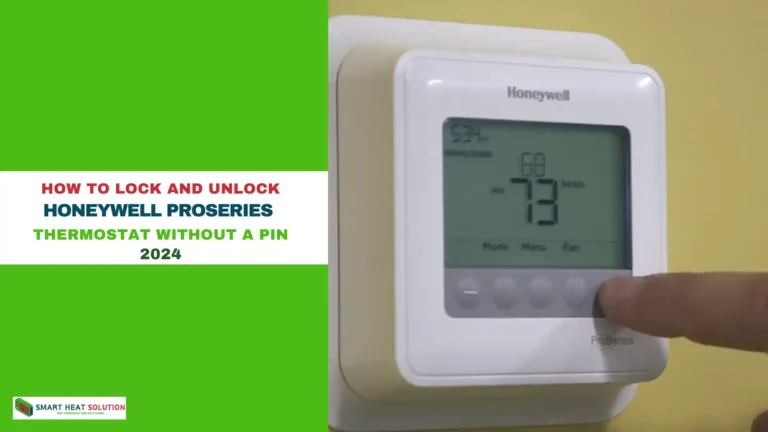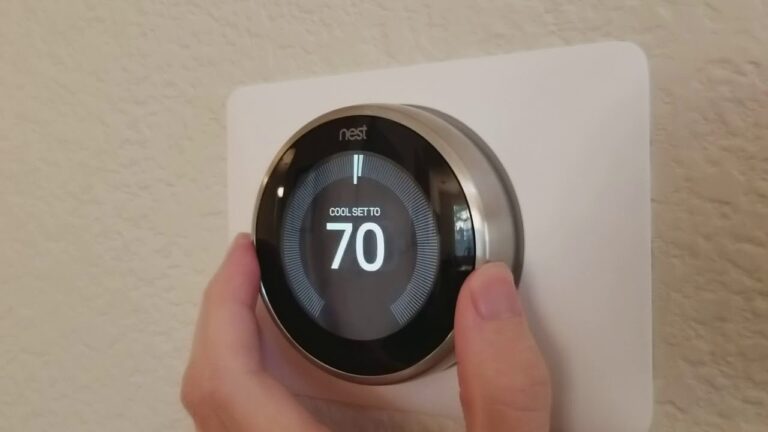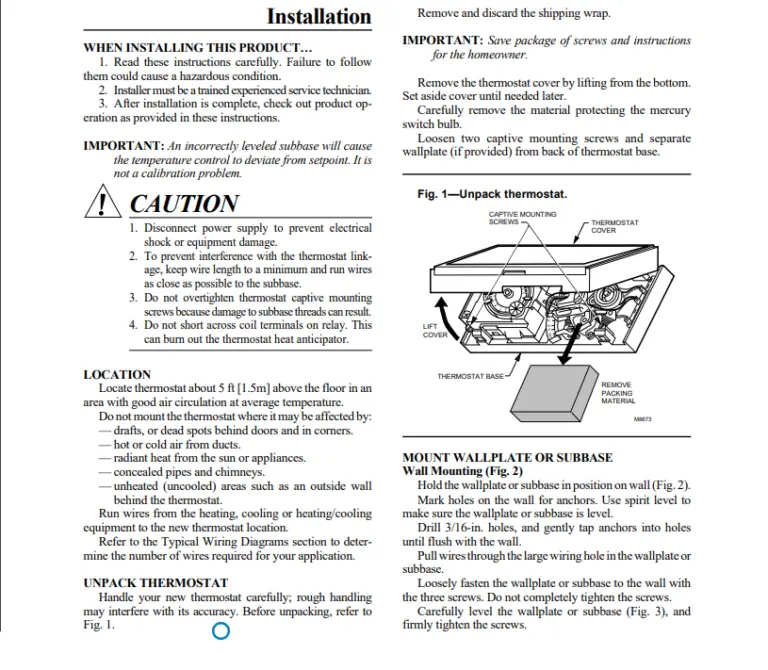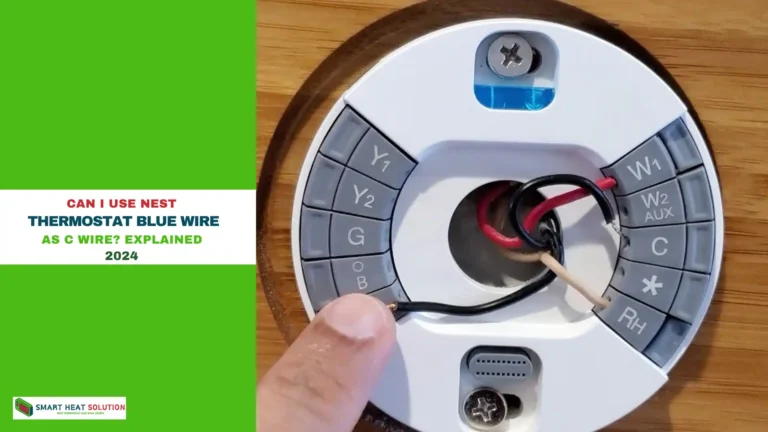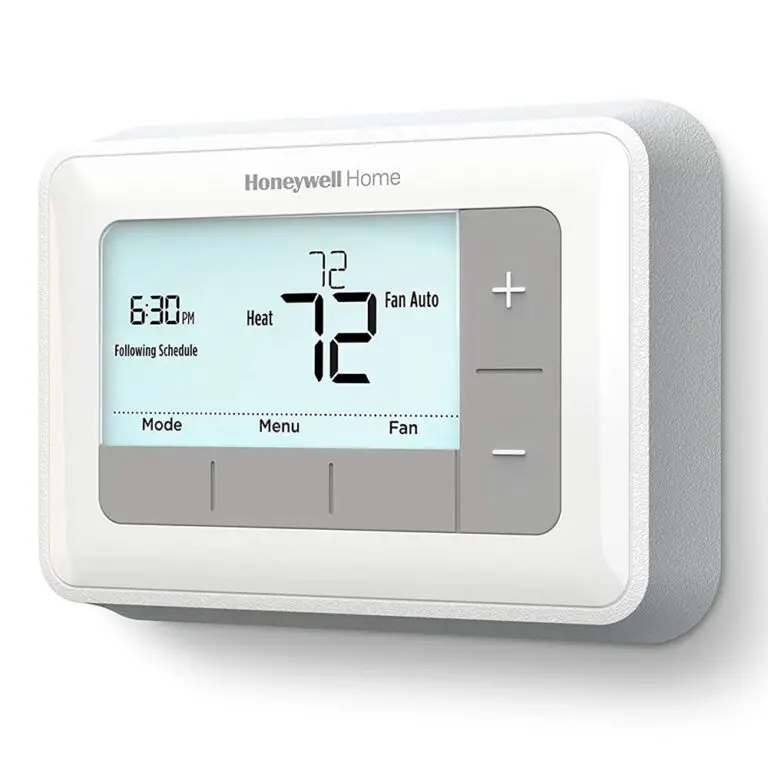Furnace Pilot Light Is On But No Heat: 5 Min Easy Fix
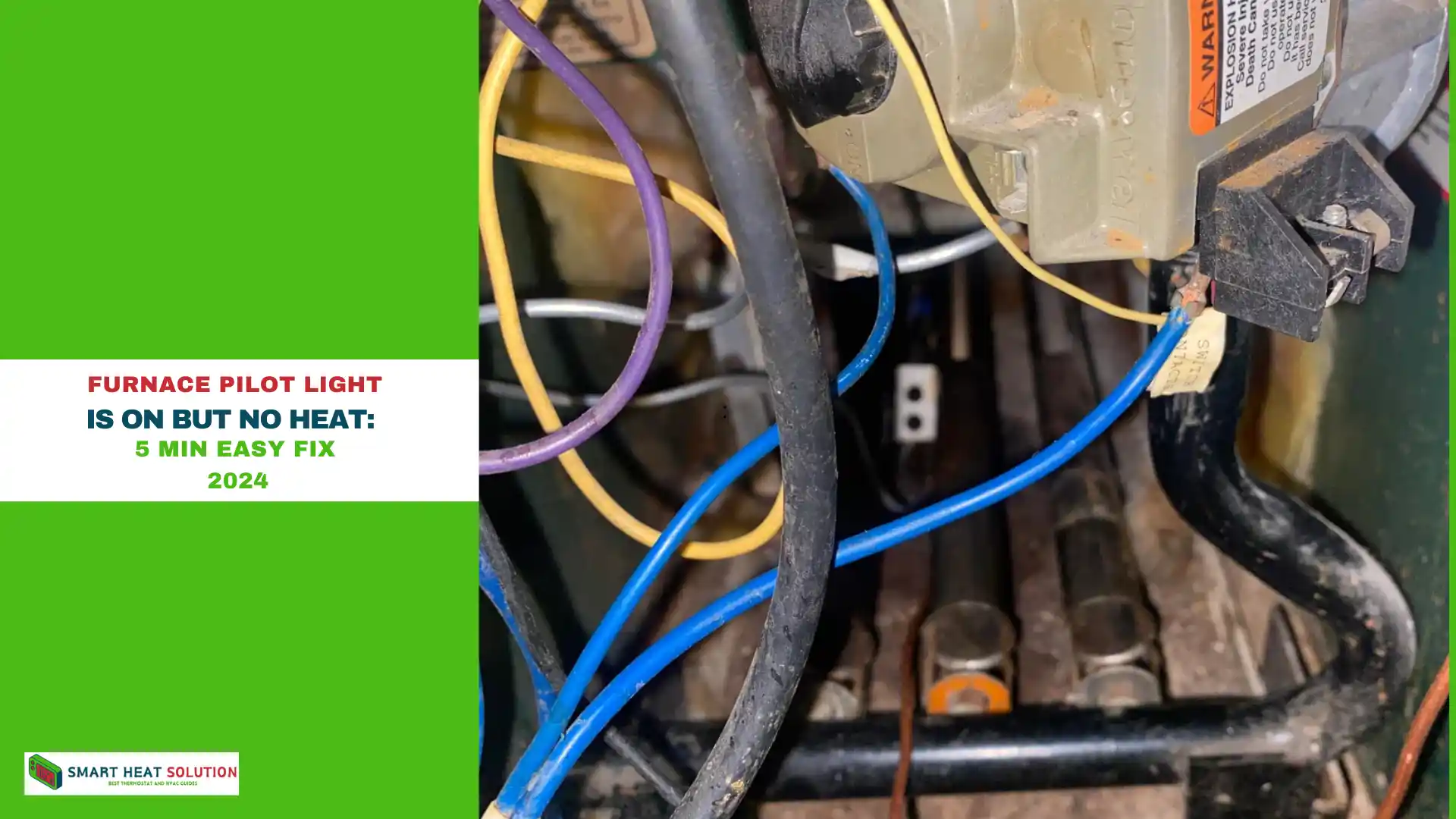
When your furnace pilot light Is on but no heat coming, it can lead to a confusing and uncomfortable experience for homeowners.
This situation indicates a possible issue within your heating system that needs thorough investigation and may require professional help.
We’ll guide you through an in-depth look at the reasons this could be occurring and the actions you can take to fix the problem.
Furnace Pilot Light Is On But No Heat Coming (Quick Answer)
If your furnace pilot light is on but no heat is coming, it could be due to several reasons. Here are some quick troubleshooting steps:
Check the Thermostat: Ensure it’s set to “heat” and the temperature is set higher than the current room temperature.
Check the Air Filter: A dirty air filter can restrict airflow and prevent the furnace from heating properly.
Check the Gas Supply: Ensure the gas valve is open and there’s a sufficient gas supply.
Check the Flame Sensor: If the flame sensor is dirty, it may not detect the pilot light, preventing the furnace from igniting.
Check the Blower Motor: If the blower motor is not working, the furnace won’t distribute heat.
If these steps don’t resolve the issue, it’s best to contact a professional HVAC technician for further diagnosis and repair.
Common Causes of Furnace Pilot Light On But No Heat
Let’s break down the main causes and solutions to this issue:
| Cause | Solution |
|---|---|
| Thermostat Issue | Ensure thermostat is set to “heat” |
| Dirty or Faulty Flame Sensor | Clean or replace flame sensor |
| Bad Thermocouple | Clean or reposition thermocouple |
| Open Limit Switch | Test and replace if necessary |
| Dirty Air Filter | Replace air filter |
| Closed Vents | Open and clear all vents |
| Defective Blower Motor | Inspect or replace blower motor |
1. Thermostat Settings Issue
Before diving into more complex solutions, first check your thermostat settings:
- Make sure it is set to “heat”.
- Ensure the temperature is set higher than the current room temperature.
Sometimes, the thermostat may accidentally switch to “cool”, which will prevent the furnace from heating—even if the pilot light is on.
Note: Around 60% of homeowners experience the issue of a lit pilot light but no heat at least once during winter.
2. Dirty or Faulty Flame Sensor
The flame sensor is essential for your furnace. It detects the flames and sends signals to the control board to regulate gas flow. If the sensor is dirty or malfunctioning, it could stop the furnace from heating, even when the pilot light is on.
How to Clean a Dirty Flame Sensor:
- Turn off the furnace power.
- Locate the flame sensor, typically near the burners.
- Remove the sensor carefully using a screwdriver.
- Clean it with a soft abrasive pad (e.g., Scotch-Brite).
- Reinstall the sensor and turn the furnace back on.
If cleaning doesn’t solve the issue, you may need to replace the sensor.
3. Faulty Thermocouple
The thermocouple is a key safety component. It senses heat from the pilot light and tells the control board to open the gas valve. If the thermocouple is damaged, it may cause the gas valve to close, preventing the burners from igniting.
Signs of a Bad Thermocouple:
- Dirt or soot accumulation
- Discoloration, cracks, or visible damage
How to Fix a Faulty Thermocouple:
- Clean the thermocouple with a soft cloth to remove any dirt or debris.
- Ensure it is properly positioned near the pilot light.
- If cleaning doesn’t fix the issue, replace the thermocouple.
4. Open Limit Switch
The limit switch monitors the furnace’s temperature to prevent overheating. If the system gets too hot, the switch opens and shuts off the burners for safety.
How to Diagnose and Fix an Open Limit Switch:
- Check the switch with a multimeter to test for continuity.
- If it shows no continuity, replace the limit switch.
- Look for other issues that may cause overheating, such as:
- A clogged air filter
- A faulty blower motor
5. Dirty Air Filter
A clogged air filter restricts airflow, which can cause your furnace to overheat. Overheating triggers the limit switch, shutting off the burners and preventing heating.
How to Fix a Dirty Air Filter:
- Inspect the air filter.
- If it’s dirty, replace it with a clean filter.
- Replace filters every 1–3 months to ensure optimal airflow and furnace performance.
6. Closed or Blocked Vents
Closed or blocked vents can restrict airflow, leading to overheating and causing the limit switch to open. This prevents the furnace from igniting the burners.
Solution:
- Open all supply vents to restore proper airflow.
- Remove any obstructions (furniture, drapes, objects) blocking the vents.
7. Defective Blower Motor
The blower motor circulates heated air throughout your home. If the blower motor is malfunctioning, your furnace may not heat properly, leading to overheating and system shutdown.
Steps to Fix a Defective Blower Motor:
- Set the thermostat to call for heat and listen for the blower motor operation.
- If the motor isn’t working, inspect the blower motor capacitor and replace it if necessary.
- If replacing the capacitor doesn’t fix the issue, you may need to replace the blower motor assembly.
Final Tips for Troubleshooting Furnace Heat Issues
- Ensure proper airflow by keeping vents open and cleaning filters regularly.
- Inspect safety components like the thermocouple, flame sensor, and limit switch to ensure they are functioning properly.
- For more complex issues, consult a professional HVAC technician to avoid safety risks.
By following these steps, you can resolve the issue and get your furnace back to working efficiently. Regular maintenance will help prevent future problems, ensuring your home stays warm and comfortable.
What You Can Do
1. Safety First
Before performing any repairs or inspections, always prioritize safety:
- Turn off the gas and electricity to the furnace if necessary.
- Follow the manufacturer’s guidelines for safe operation and maintenance.
2. Regular Maintenance
A well-maintained furnace is less likely to experience problems. To keep your system running smoothly:
- Schedule regular inspections and maintenance to ensure the furnace stays in top condition.
3. Consult a Professional
If you’ve checked all the basics and your furnace still isn’t working:
A technician can identify the root cause and resolve complex issues safely.he issue, and propose a solution. Remember, working with gas and electrical components can be dangerous, and it’s best to leave those tasks to qualified technicians.
Call a professional HVAC technician for a thorough inspection and repair.
Potential DIY Fixes
Cleaning Burners
Follow these steps to clean your furnace burners:
- Disconnect power to the furnace.
- Remove burner covers carefully.
- Use a soft brush to remove loose debris.
- Vacuum around the burner components to eliminate dust and dirt.
- Use compressed air for more thorough cleaning.
- Reassemble the burner parts and carefully test the system.
Pilot Light Adjustment
If the pilot light appears weak or inconsistent:
- Locate the pilot light adjustment screw.
- Make small, careful adjustments to strengthen the flame.
- Ensure the flame is strong and blue—this indicates proper combustion.
- Check the thermocouple to ensure it’s interacting correctly with the flame.
Prevention and Maintenance Tips
Regular maintenance can help prevent furnace issues:
- Schedule annual professional inspections to check for any potential problems.
- Replace air filters regularly (every 1-3 months) to ensure proper airflow.
- Keep the furnace area clean and free of obstructions for efficient operation.
- Monitor pilot light performance to ensure consistent flame behavior.
- Listen for unusual sounds during furnace operation—strange noises could indicate an issue.
Cost Considerations
Repair costs for furnace issues can vary depending on the problem:
- Minor repairs: $100 – $300
- Thermocouple replacement: $150 – $250
- Gas valve repair: $200 – $500
- Complete furnace replacement: $2,000 – $6,000
FAQs
Why is my pilot light lit but no heat?
If your pilot light is lit but your furnace is not producing heat, it could be due to several reasons:
Thermostat Issues: Ensure your thermostat is set to “heat” and the temperature is set higher than the current room temperature.
Faulty Thermocouple: The thermocouple might be malfunctioning, preventing the main burners from igniting.
Dirty Burners: Dirty or clogged burners can prevent proper ignition.
Airflow Problems: Check for blocked vents or a dirty air filter that could be restricting airflow.
Why is my furnace light on but no heat?
If your furnace light is on but there’s no heat, consider the following:
Thermostat Settings: Verify that your thermostat is set correctly and that the batteries are not dead.
Power Supply: Ensure that the furnace has power and that the circuit breaker hasn’t tripped.
Ignition Problems: There might be an issue with the ignition system, such as a faulty ignitor or flame sensor.
Air Filter: A clogged air filter can restrict airflow and prevent the furnace from heating properly.
Why is my boiler not working but the pilot light is on?
If your boiler’s pilot light is on but it’s not working, check for these issues:
Thermostat Settings: Ensure the thermostat is set correctly and is functioning properly.
Water Pressure: Low water pressure can prevent the boiler from operating correctly.
Air in the System: Air locks in the pipes can cause the boiler to malfunction.
Faulty Pump: The circulator pump might not be working, preventing hot water from circulating.
Why is my furnace running but not hot air?
If your furnace is running but not producing hot air, consider these possibilities:
Dirty Air Filter: A clogged air filter can restrict airflow and reduce heating efficiency.
Faulty Blower Motor: The blower motor might be malfunctioning, preventing hot air from being distributed.
Ignition Issues: Problems with the ignition system can prevent the furnace from heating the air properly.
Ductwork Leaks: Leaks in the ductwork can cause heated air to escape before reaching your living spaces.
Why is my furnace lighting but not blowing?
If your furnace is lighting but not blowing air, it could be due to:
Blower Motor Problems: The blower motor might be faulty or not receiving power.
Control Board Issues: There might be a problem with the furnace’s control board.
Thermostat Wiring: Incorrect wiring or a faulty thermostat can prevent the blower from operating.
Limit Switch: A faulty limit switch can prevent the blower from turning on.
How to reset a furnace?
To reset your furnace, follow these steps:
Turn Off the Power: Locate the power switch for the furnace (usually a toggle switch near the furnace) and turn it off.
Wait a Few Minutes: Allow the furnace to cool down for about 5 minutes.
Turn the Power Back On: Flip the power switch back on.
Check the Thermostat: Ensure the thermostat is set to “heat” and the temperature is set higher than the current room temperature.
Monitor the Furnace: Listen for the furnace to restart and check if it begins to produce heat.
Conclusion
If your furnace’s pilot light is on but no heat is coming through the vents, it can be concerning. However, understanding the potential causes and troubleshooting steps outlined above can help you pinpoint the issue.
By performing regular maintenance, checking thermostat settings, and ensuring clean filters and vents, you can often prevent these problems before they escalate.
If you’re uncertain or the problem persists, don’t hesitate to contact a professional to avoid further complications.certain or uncomfortable troubleshooting your heating system yourself. Stay warm and cozy this winter!
More resources:
https://www.pickhvac.com/furnace/troubleshoot/not-igniting
https://www.ars.com/blog/furnace-not-igniting

I’m Alan William’s, the founder of SmartHeatSolution.com. I am from California, USA, I’m passionate about innovative heating technologies and their impact on our homes and businesses. With a background in electrican and home repair , I aim to make smart, energy-efficient heating accessible to everyone. When I’m not writing, I’m likely interested in all the thermostat brands and their new technnology. Thanks for stopping by!

